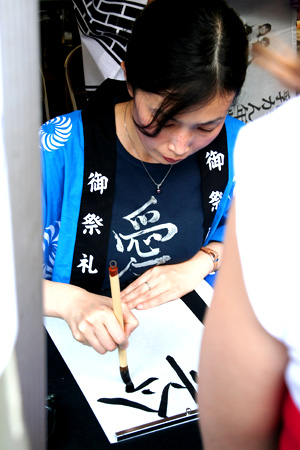Japanese calligraphy facts for kids
Japanese calligraphy (書道, shodō) is a special art form in Japan. It is often called shodō, which means "the way of writing." This art uses brushes and ink to create beautiful characters and words.
The Story of Shodō
How it Began
Japanese calligraphy began when Kanji writing came to Japan from China. Kanji are the Chinese characters used in the Japanese writing system. At first, people in Japan learned to write these characters in a Chinese style.
Later, a religion called Buddhism arrived in Japan. This made calligraphy spread very quickly. Buddhist teachings often involved copying sacred texts called sutras. People believed that copying these texts by hand was a way to gain good luck and show devotion.
Important People and Ideas
Powerful leaders like Emperor Shotokutaishi and Emperor Shoumu encouraged people to copy sutras. This helped calligraphy become even more popular.
Also, Japanese travelers called Japanese envoys to Tang Dynasty China went to China. They brought back many ideas and parts of Chinese culture, including new ways of writing. These new ideas greatly influenced how Japanese calligraphy developed over time.
Images for kids
-
Writing on the halo of a statue of the Medicine Buddha at Hōryū-ji Temple. This was written in the 7th century.
-
Cry for noble Saichō, written by Emperor Saga when Saichō died. Emperor Saga was a skilled writer and calligrapher.
-
A page of calligraphy from the Sarashina nikki, a travel diary copied by Fujiwara no Teika.
-
A piece from the "100 Poets anthology," written by Hon'ami Kōetsu.
See also
 In Spanish: Shodō para niños
In Spanish: Shodō para niños








